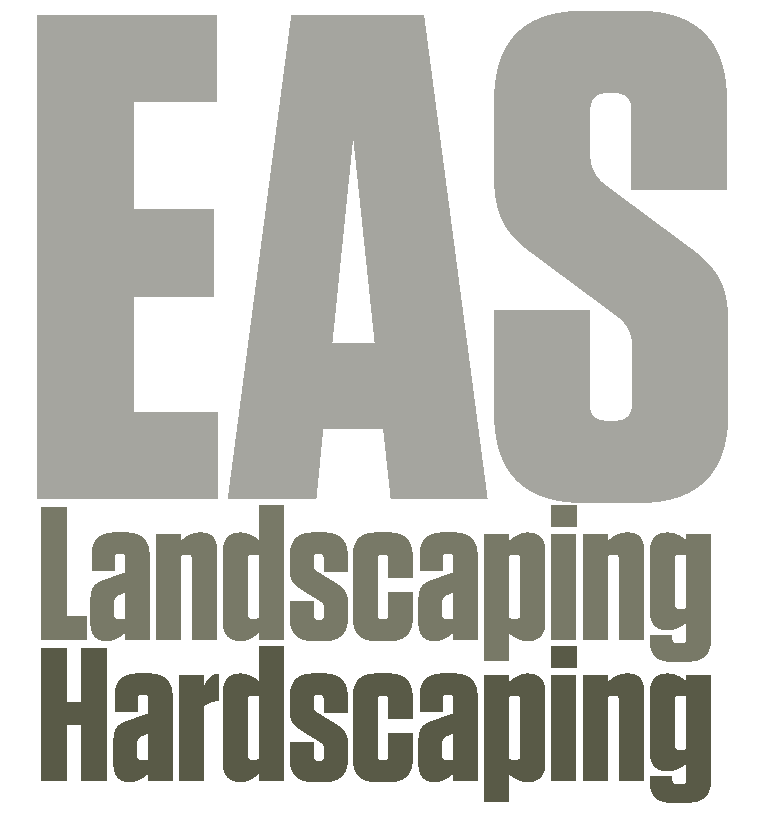


(267) 670-0173
Nurseries/Garden Centers
Feeney's Wholesale NurserySam Browns Wholesale Nursery
Sam Browns Street Name Plant List
Redbud Native Nursery
Good Host Plants
Moss Acres
Greensgrow Farms
Bluestone Perennials (OH)
Prairie Moon Nursery (MN)
Fencing and Wood Products
Alenco Fence & Paver Corp.Medford Cedar Products
Sod
Tuckahoe Turf FarmsShan-gri-la Sod Farm
Tabernacle Sod Farm
Stone
Rock ProductsGallantino Supply
Cava Building Supply
D&S Concrete & Masonry Supply Company
Krukowski Stone Company - Wisconsin's Finest!
Landscaping/Hardscaping Supplies
GemplersSiteOne
Sod Calculators/Estimators
Sod CalculatorSod Cost Estimator
Sod Calculators/Estimators
Lowe's Mulch and Soil CalculatorCaring for Newly Installed Sod
- Do not install sod if heavy rain is forecast after you install, like later in the day or the next day. You run the risk of drowning the short, fragile roots of sod.
- Prepare ground with soft, feathery surface preferrably top soil.
- Wet ground with hose before laying sod, this prevents dry soil from sucking moisture from tender sod roots.
- Install sod in morning or early evening if the sun is blazing and/or it is hot. Installing in blazing sun at 1pm will place shock on the sod.
- Install sod like carpet, back and forth so seams do not match.
- Make sure seams do not overlap as that part of sod could die as it is not touching the soil.
- I like to walk on the sod to inspect that all is touching and no seams are overlapping or too far apart.
- Water sod immediately for about 3-5 minutes. In general, each watering should only consist of enough water to wet the roots. New sod is not able to soak up much water at once. This is very important.
- The key is that the new sod needs to be moist underneath, basically at all times, if feasible.
- Try as hard as you can to not walk on the sod, including your kids and even pets, in general.
- Water sod in the morning, in the middle of the day, and early evening. In the middle of direct high sun, like a gunfight at highnoon, the water will evaporate quickly, so your watering process won't be that effective during that session. But don't worry about it too much. Just be aware of it.
- For the first week and a half or 2 weeks, water everyday 3-4 times per day, watering only enough to wet the roots. Remember that the sod needs to be moist, not soggy and not soaked.
- If God decides to make it rain, like all-day-rain, then you don't have to water. God watered for you.
- After a week and a half try to gently lift a corner of a sod slice. You should feel it resist as the roots should be growing.
- After about a week and a half you can cut back on watering to twice per day.
- At the same time, you can water longer for 5-10 minutes to encourage deep root growth during the longer and less frequent watering sessions.
- After three weeks or so, you can water every other day for about 10-15 minutes, allowing water to seep further into the soil to encourage deep root growth. This is important as you want your sod to establish nice, deep roots, like normal grass. Established lawns are able to go dormant during the winter and during heat waves, like it's no big deal.
- You can mow the sod after about 2 1/2 weeks (or a little more) but make sure it is "rooting." Don't water the day before you cut. This allows the soil to firm-up before you go traipsing all over it and cut it. Don't use a riding mower ya lazy stupe, use a walk behind or push mower. Cut at a very high setting. You don't want to cut more than 1/3 of the grass blade, no matter what the height is (this allows for adequate photosynthesis).
- You can fertilize in 4-5 weeks using a liquid, organic season-appropriate fertilizer. You need to wait until the roots are established and acclimated to their new soil/conditions before you apply fertilizer. But be careful when doing this. Consult with a lawncare specialist or do your research on the Google. There is conflicting information out there on this topic.
- Once your sod is established you can water it as you see fit, taking a little extra care as it is newly established sod, not grass that has been in the ground for years.
- Finally, unless you are immune from the forces of nature, you will need to maintain your grass. You will invariably get weeds (weeds blow in from the top y'all), brown/bare spots, squirrel invasions, and Tzchernski clumping. None of this is life threatening. After a glass of iced tea or beer, you will be refreshed enough to deal with these issues, and maybe actually do something about them, like weed occasionally, apply season-appropriate fertilizer, fill squirrel holes with seed, and "over seed" for Tzchernski clumping.
- Oversseeding is an excellent way to keep your sod fresh. Spring and Fall are the best times to seed.
- Tzchernski clumping is not a real thing. Just wanted to see if you read this far. Tzchernski is a character from a Martha Gellhorn (Hemmingway's third wife) short story called 'Le Voyage Forme la Jeunesse.'
Cedar Wood - Difference between yellow and red cedar
What is the difference between yellow and red cedar? Both yellow and red cedar are naturally rot resistant which is why they are used in our planters. The biggest difference is that red cedar will absorb water while yellow cedar will repel water. Hmm, not sure how true this is, white cedar is what is available easily in Philly. All cedars will absorb water but are excellent against rot and saturation damage.
Cedar Planters DirectDaniel's Custom Cedar Boxes - Oregon, great prices
Wood Sealers for Fence & Deck Boards
Brazilian Lumber - Penofin Hardwood Formula, Transparent Penetrating Oil Finish, Stain & Sealer, Penofin 550 VOC Hardwood FormulaDifference between clear and transparent stain? -- The difference lies in the amount of pigment in each. Transparent stains, although they appear clear, have some pigment in them for UV protection. Semi-transparent stains have more pigment, but still allow some of the wood grain to show through. Solid stains are basically like paint.
Permeable Pavers
Help the planet, stop rain run-off. It helps to have a sense of humor when you read the next several paragraphs.
Minimum 15" dig, bottom layer 6" of 3/4" - 2" washed crushed stone, compact twice across and lengthwise. Next layer 4" of 1/4" - 1 1/2" washed crushed stone, compact twice across and lengthwise, install concrete on perimeter or hard plastic edging then 2" metal poles screed 1/4" washed crushed stone over one corner with 2x4, then repeat over entire area. These steps are the foundation, literally, for a level surface. Getting this level is not as easy as it looks.
The This Old House article (link below) will not tell you this, but the critcal part of installing pavers is to make sure the surface is flat (see next paragraph) and has no dips or uneven spots, else your driveway or patio will look like it is schvitzing.
The surface should be level per se or slightly sloped away from the garage/house. Use a 6' metal level, in fact use two 6' metal levels (when you try this you will know why you may need two), to ascertain that the surface is level, the entire surface of your driveway/patio. If you are building a 400 square foot driveway, then all 400 square feet should be level. Easy, right?
Permeable pavers allow the water to drain down, into the area of your driveway/patio, so slope should not be a factor. Think about this a little, though, as this is not as cut and dried as internet searches make it appear to be. It's always safest to have some semblence of a "pitch" away from your house or garage. Challenging the weather when it rains, hard, thinking that the permeability of your surface will stand up to any rain event, may have you in the garage sweeping out the water that "the weather" rained down on you. Nature 1, permeable pavers 0.
Start in the lowest corner and lay pavers next to each other, check every 6-10' to make sure pavers are square to the first row. Lay entire area, then go back for cuts around edges etc. Fill joints with the same 1/4" washed crushed stone that you just used below the pavers and sweep at 45 degree angles so pavers don't get jiggled or moved. Sweep clean, then compact diagonally with the vibrating tamper. Fill joints that sunk and compact again.
One final thing that is not mentioned in any articles or posts about permable pavers is that weeds love them, especially (and obviously) the "open" pavers designed for grass or low growing ground cover to be grown in the "holes."
All surfaces can grow weeds (busy highways, basements with no light, tar rooftops), and because a permeable paver driveway/patio does not have the joints between pavers (and the holes, if the pavers have them) "sealed" with polymeric sand, (or for porcelain, grout or certain natural stone installs like bluestone, mortar), weeds will have a field day growing in the joints. 1/4" washed crushed stone is perfect for them! Remember - weeds blow in from the top, from your next door neighbor's yard, etc. Make sure you have a plan to handle weed growth because it will happen.
Following the steps above and handling everything else with faith and a positiive attitude, your driveway/patio/area will be ready to handle all rain into its surface with no rain run-off (fingers crossed)!
15" deep = 6" bottom, 4" next level, 2" top level, 3" (approx) driveway pavers (other pavers are more like 2 - 2 1/2").
How to Install a Permeable-Paver Driveway - This Old HouseNative Sun/Shade Guide

Pennsylvania DCNR Guides
DCNR Pennsylvania - landscaping with native plants and a guide to PA native plantsPhilly Parks and Rec Approved Street Trees
Approved Philly Street TreesShade Plants
| Plant | Height | Native? |
| Common Violet | 10" | Yes |
| Shooting Star - late May to early June | 20" | Yes |
| Hosta | 10" to 30" | No |
| Lungwort | 12" | No |
| Bleeding Heart | 36" | Yes |
| Coralbells | 36" | Yes |
| Ferns (Hardy) - not all ferns are native | 24" | Yes |
| Ajuga | 6" | No |
| Bigroot Geranium | 18" | No |
| Cushion Spurge | 36" | No |
| Hellebore or Christmas Rose | 36" | No |
| Foamflower | 12" | Yes |
| Lilyturf (Liriope) | 12" | No |
| Deadnettle (lamium) | 30" | No |
©2024 EAS Landscaping ‣ Brewerytown/Philadelphia PA